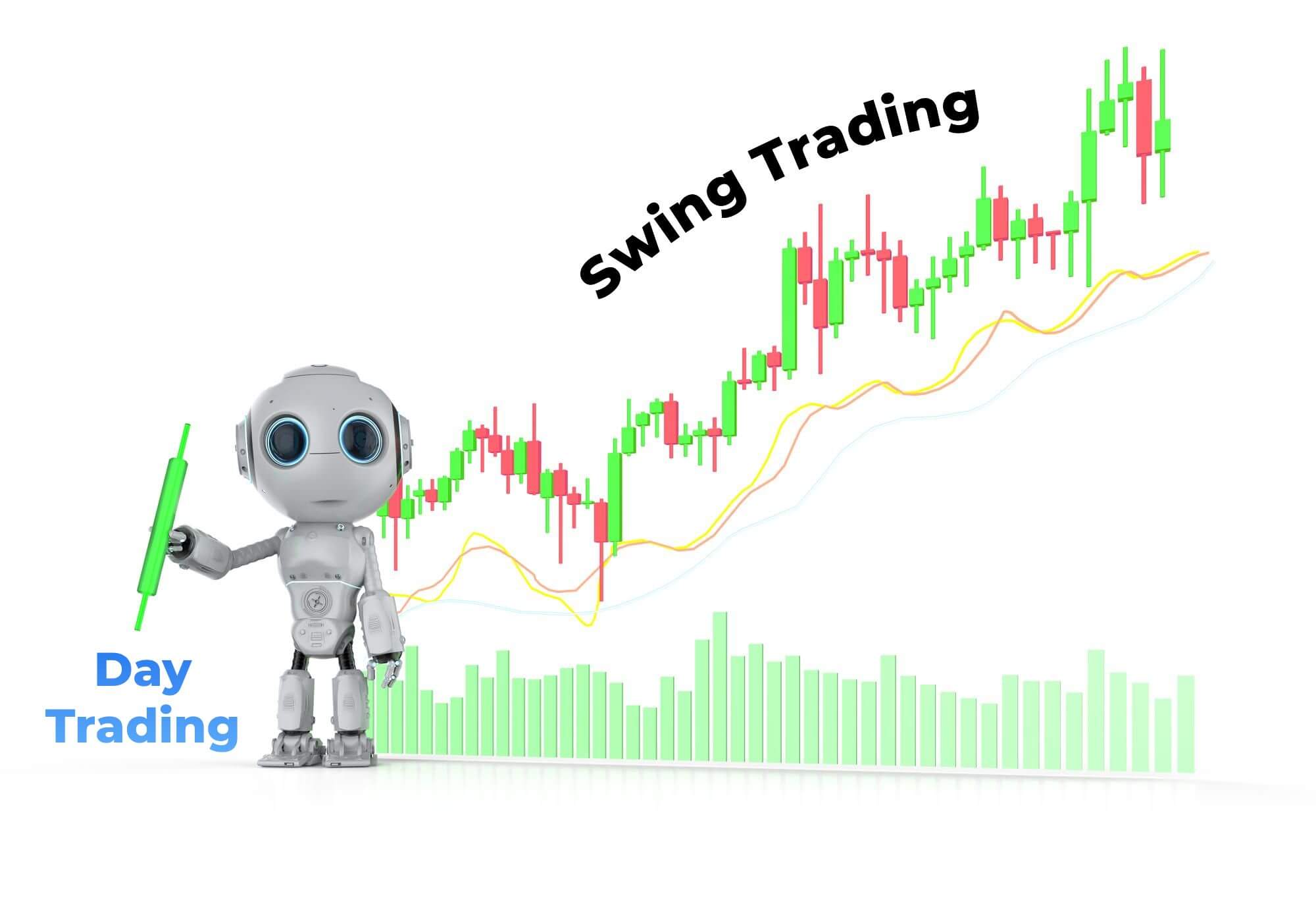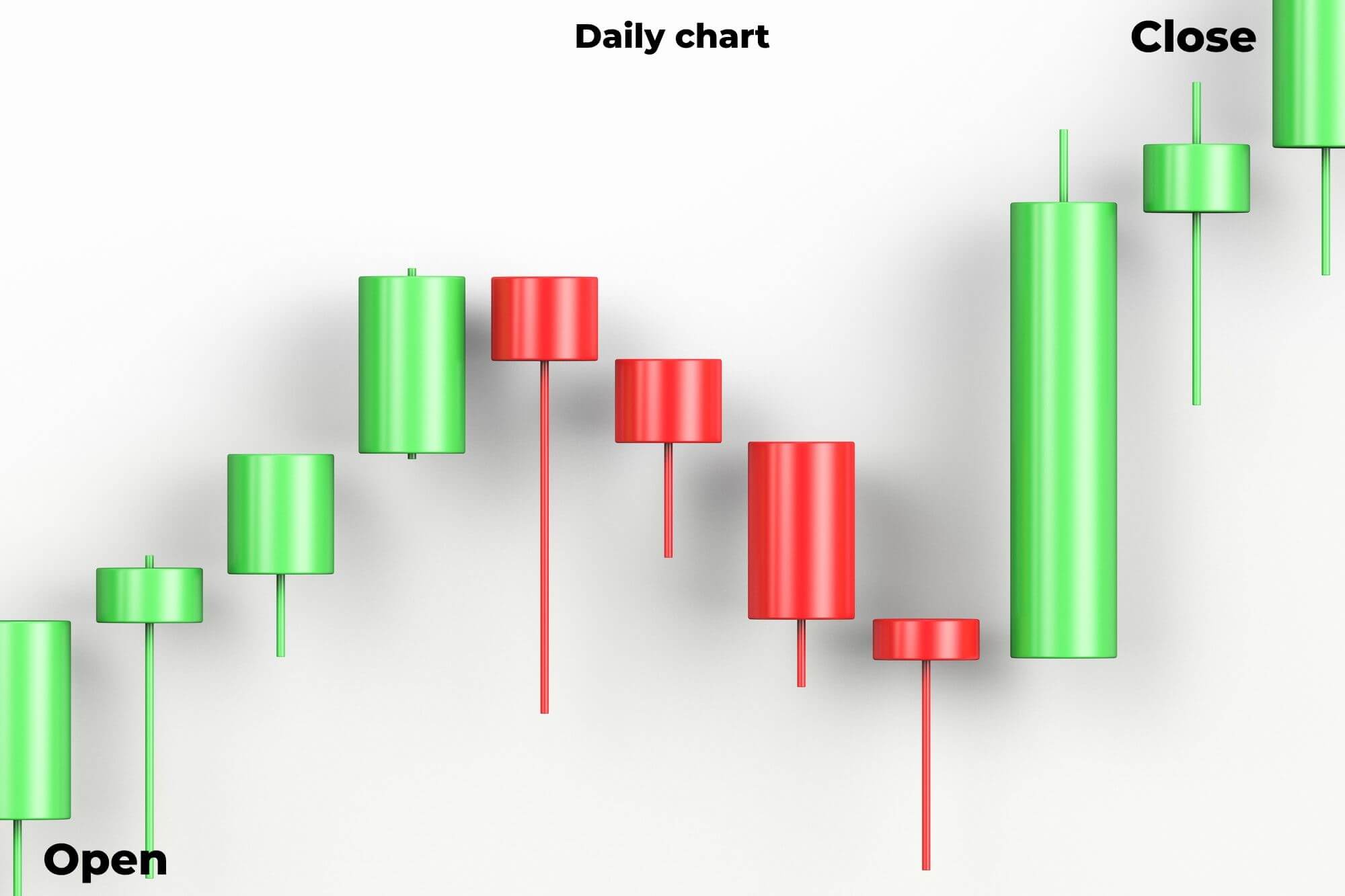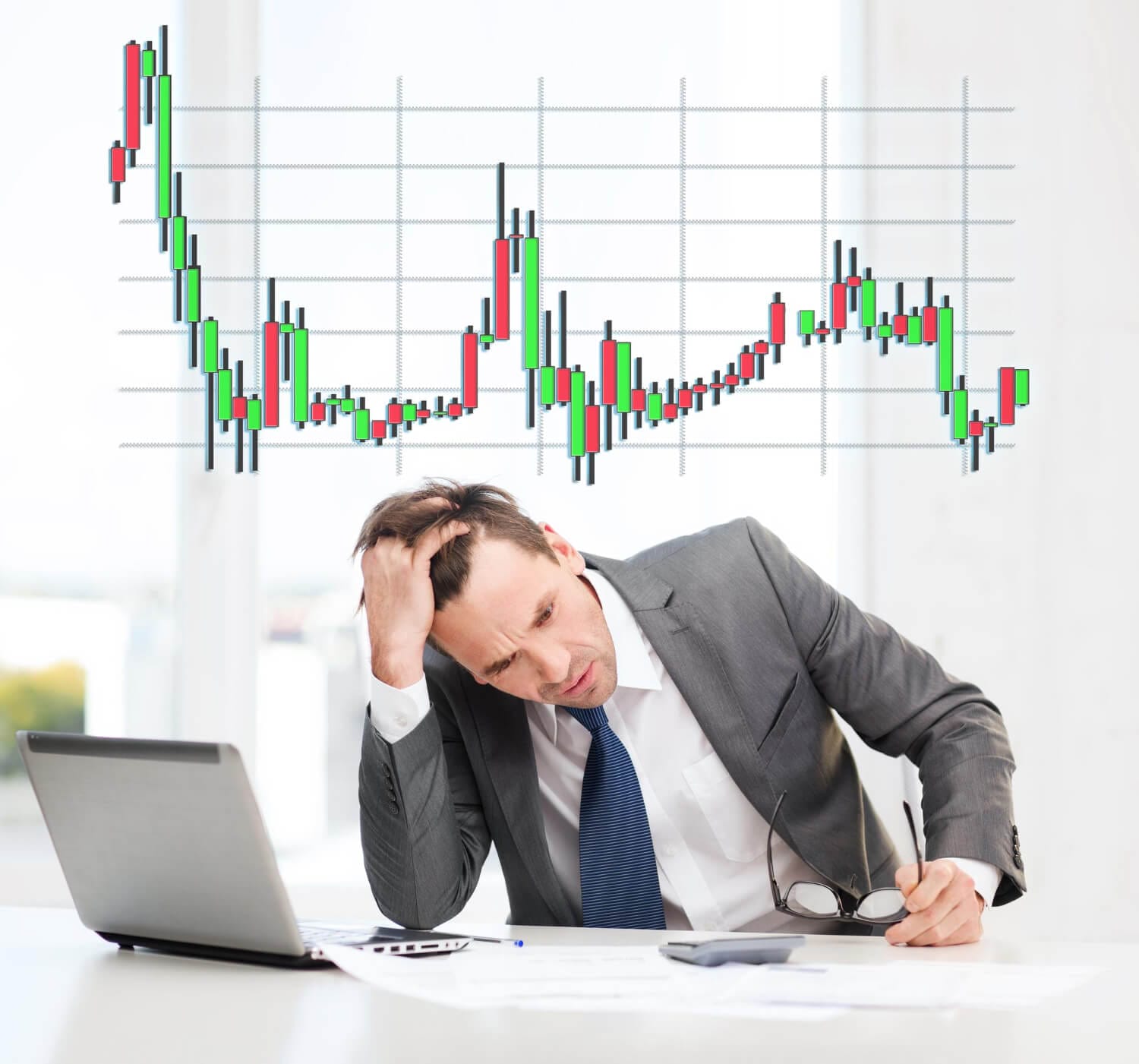1. Introduction

Forex Trading Overview
The introduction serves as an opening statement for the entire guide. It’s designed to engage the reader and provide a brief overview of the topic at hand, which is the comparison between swing trading and day trading in the context of forex markets.
The introductory paragraph mentions the significance of forex trading, highlighting it as the largest and most liquid financial market globally with a daily turnover exceeding $6 trillion. This emphasizes the scale and importance of the forex market.
By mentioning the enormous daily turnover, it conveys the idea that the forex market is dynamic and presents ample opportunities for traders. This encourages the reader’s interest and curiosity.
Setting the Stage
The introduction also serves to set the stage for the comparison that will follow in the subsequent sections. It prepares the reader for the exploration of the two primary trading styles, swing trading and day trading.
It signals to the reader that they are about to gain insights into these trading strategies and how they differ. This prepares them for the knowledge they will gain as they read through the guide.
Importance of Choosing the Right Trading Style
The introduction subtly highlights the significance of choosing the right trading style. It suggests that the choice between swing trading and day trading is a crucial decision for forex traders.
By addressing the importance of the topic, it immediately engages readers who may be struggling with this decision or looking to refine their trading strategies.
Guide’s Structure
While not explicitly mentioned in the introduction, the structure of the guide is implicitly introduced. The reader understands that the guide will first provide an overview of forex trading, then delve into the two trading styles, compare them, and conclude with recommendations and key takeaways.
This structure helps the reader anticipate what to expect, making it easier for them to follow along with the content.
In essence, the “Introduction” sets the context, engages the reader’s interest, and prepares them for the valuable information that will follow in the subsequent sections. It is a crucial element of any informative guide as it provides the initial connection between the reader and the subject matter.
2. Understanding Forex Trading
Forex Trading Overview
This section provides a fundamental understanding of what forex trading is. It explains that forex trading involves the exchange of one currency for another with the objective of profiting from changes in currency pair prices.
The explanation introduces the concept of currency pairs and their role in representing exchange rates. For instance, the EUR/USD pair represents the exchange rate between the Euro and the US Dollar.
Leverage
Leverage is an important aspect of forex trading. It’s the practice of controlling a larger position with a relatively small amount of capital. This section touches on the concept of leverage and its significance in forex trading.
It mentions that while leverage can amplify profits, it also increases the potential for losses. This underscores the need for effective risk management in forex trading.
Contextualization of Forex Trading
The section provides context for the entire guide by establishing a foundation of knowledge about forex trading.
By explaining what forex trading is and introducing the concept of leverage, it ensures that readers, whether new to forex trading or experienced, have a common understanding of the basics.
Why Understanding Forex Trading Is Important
Understanding forex trading is crucial because it forms the basis for comprehending the more advanced concepts that will be discussed later in the guide.
Readers need a solid grasp of what forex trading entails to appreciate the differences between swing trading and day trading, and to make informed decisions about their trading style.
Priming for Future Sections
Additionally, this section serves as a primer for the sections that will follow. It sets the stage for the subsequent explanations of swing trading and day trading by providing the fundamental knowledge necessary to appreciate the nuances of each style.
It helps the reader connect the dots between the basic concepts of forex trading and the more specific strategies that will be discussed later in the guide.
In summary, “Understanding Forex Trading” serves as the foundational knowledge base for the rest of the guide. It ensures that readers are on the same page regarding the basics of forex trading, which is essential for comprehending the more detailed explanations of swing trading and day trading that will follow.
3. Swing Trading
Definition
This section starts by defining what swing trading is. Swing trading is a trading style that focuses on capturing medium-term price swings, or “swings,” within the forex market.
The definition sets the tone for what the reader can expect to learn in this section, which is a deeper understanding of the principles and strategies behind swing trading.
Timeframe
In this part, the timeframe associated with swing trading is explained. Swing traders typically hold positions for a period that ranges from a few days to several weeks.
By highlighting the relatively longer holding periods, this part distinguishes swing trading from other trading styles, such as day trading, where positions are typically closed within the same day.
Analysis
This section delves into the analysis methods used by swing traders. Swing traders often employ a combination of both technical and fundamental analysis.
It outlines that technical analysis involves using indicators, chart patterns, and key support/resistance levels to identify entry and exit points. Additionally, it mentions that fundamental analysis may also play a role in the decision-making process, particularly for longer-term positions.
This highlights the comprehensive approach swing traders take to analyze the forex market.
Risk Management
The risk management aspect of swing trading is explained in this part. Swing traders use wider stop-loss orders compared to shorter-term traders to account for the longer holding periods.
The section also mentions that position sizes can be adjusted to manage risk within the context of the trader’s overall portfolio.
This highlights the importance of risk management in swing trading and how it differs from other trading styles.
Pros and Cons
- This section provides a summary of the advantages and disadvantages of swing trading.
- It mentions the benefits, such as reduced stress compared to day trading, suitability for individuals with busy schedules, and the potential for higher profits compared to long-term investing.
- It also discusses the drawbacks, including greater exposure to overnight or weekend market gaps, limited trading opportunities compared to day trading, and the need for patience and discipline to hold positions for extended periods.
- This part offers a well-rounded view of swing trading, helping the reader weigh the pros and cons when considering this trading style.
In essence, “Swing Trading” breaks down this trading style comprehensively. It provides a definition, outlines the timeframe, discusses the analysis methods, explains risk management strategies, and presents the pros and cons. This detailed information equips the reader with a solid understanding of what swing trading involves and helps them make an informed decision about whether it suits their trading goals and preferences.
4. Day Trading
Definition
This section begins by defining what day trading is. Day trading is a trading style where traders open and close positions within the same trading day.
The definition makes it clear that day traders do not hold positions overnight, distinguishing this style from swing trading or longer-term investment approaches.
Timeframe
In this part, the timeframe associated with day trading is explained. Day traders primarily focus on shorter timeframes, such as 1-minute, 5-minute, or 15-minute charts.
It underscores the need to close all positions by the end of the trading day, highlighting the intraday nature of day trading.
Analysis
The section delves into the analysis methods used by day traders. It explains that day traders primarily rely on technical analysis due to the fast-paced nature of their trades.
Day traders use indicators like moving averages, relative strength, and chart patterns to identify entry and exit points. The section also mentions that fundamental analysis plays a less significant role in day trading compared to technical analysis.
This highlights the focus on quick and precise decision-making in day trading.
Risk Management
This part focuses on the risk management strategies used by day traders. Day traders employ tight stop-loss orders to limit potential losses during the trading day.
It also mentions that position sizes are adjusted to manage risk within the confines of a single trading day.
The emphasis here is on the importance of quick risk management in a high-paced trading environment.
Pros and Cons
- This section provides a summary of the advantages and disadvantages of day trading.
- It mentions benefits like numerous daily trading opportunities, minimal overnight exposure to market gaps, and suitability for traders who can dedicate the entire trading day to monitor the market.
- It also discusses the drawbacks, including high stress levels due to the fast pace, potential for significant losses if risk management is not diligently practiced, and limited time for in-depth analysis.
- The pros and cons presented offer a balanced perspective, enabling the reader to assess whether day trading aligns with their trading style and goals.
In summary, “Day Trading” offers a comprehensive breakdown of this trading style. It begins with a definition, outlines the specific timeframe, discusses the predominant analysis methods, explains the unique risk management strategies, and presents the pros and cons. This detailed information equips the reader with a solid understanding of what day trading entails and helps them make an informed decision about whether it suits their trading preferences and objectives.
5. Key Differences
Time Horizon:
- Day Trading: Day trading involves opening and closing positions within the same trading day. Day traders do not hold any positions overnight, aiming to profit from short-term price movements during the trading session.
- Swing Trading: Swing traders hold positions for several days to weeks, seeking to capture larger price swings that occur over this longer time frame. They are willing to hold positions overnight and even over weekends.
Holding Period:
- Day Trading: Day traders typically have very short holding periods, ranging from a few seconds to a few hours. They aim to capitalize on intraday price volatility and close all positions before the market closes.
- Swing Trading: Swing traders have longer holding periods, which can last from several days to several weeks. They take a more patient approach, waiting for price movements to develop over the course of days or weeks.
Trading Frequency:
- Day Trading: Day traders engage in high-frequency trading, making multiple trades within a single day. They may execute numerous trades in quick succession.
- Swing Trading: Swing traders trade less frequently, often making just a few trades per week. They wait for specific setups to emerge before taking action.
Risk Tolerance:
- Day Trading: Day traders often use leverage to amplify their positions and, as a result, expose themselves to higher risks. They need to be prepared to handle the rapid price fluctuations that occur during the trading day.
- Swing Trading: Swing traders typically use lower leverage, and they have a higher tolerance for price fluctuations since they hold positions for a more extended period. Overnight risks are also a consideration.
Analysis:
- Day Trading: Day traders primarily rely on short-term technical analysis, focusing on intraday charts, candlestick patterns, and technical indicators to make rapid trading decisions.
- Swing Trading: Swing traders employ a combination of technical and fundamental analysis. They may look at daily or weekly charts, incorporate longer-term technical indicators, and consider fundamental factors that can influence a security’s price over a more extended period.
Emotional Stress:
- Day Trading: Day trading can be highly stressful due to the fast-paced nature of the activity. Traders must make quick decisions and be constantly attentive to market movements.
- Swing Trading: Swing trading is typically less stressful because traders have more time to make decisions. They are not as affected by intraday market noise, and they have the luxury of stepping away from the screens for longer periods.
Capital Requirements:
- Day Trading: Day traders may require more substantial capital because of the higher trading frequency, potential use of leverage, and the need for sufficient capital to cover margin requirements.
- Swing Trading: Swing traders can start with a smaller amount of capital since they execute fewer trades and hold positions for more extended periods. This can be an attractive option for traders with limited funds.
Lifestyle:
- Day Trading: Day trading typically demands full-time attention during market hours and may not be suitable for individuals with other commitments. It can be challenging to balance with other responsibilities.
- Swing Trading: Swing trading offers a more flexible lifestyle. Traders do not need to be glued to their screens all day and can manage their trades around other commitments, making it a part-time or full-time option.
Tax Implications:
- Day Trading: Day trading can result in more frequent capital gains and losses, which may lead to more complicated tax reporting. Tax laws regarding day trading can vary by jurisdiction.
- Swing Trading: Swing trading involves fewer trades, simplifying tax reporting for many traders. However, tax regulations still apply, and it’s important to be aware of them.
In summary, the primary differences between swing trading and day trading revolve around the time horizon, holding periods, trading frequency, risk tolerance, analysis methods, emotional stress, capital requirements, lifestyle considerations, and tax implications. The choice between these two strategies should align with your tradidbng goals, risk tolerance, and available resources.
6. Which Is Right for You?
Considerations for Choosing a Trading Style
This section is focused on helping readers make an informed decision about which trading style, whether swing trading or day trading, aligns best with their individual preferences and circumstances.
It offers a set of considerations that readers can evaluate, allowing them to determine which style suits their trading goals.
Choose Swing Trading If:
The guide provides clear guidelines for choosing swing trading. It lists the specific situations in which swing trading might be the right choice.
These considerations include having a busy schedule and not being able to dedicate the entire trading day, a preference for a less stressful trading style, an interest in combining both technical and fundamental analysis, and an ability to tolerate the risk associated with overnight and weekend market gaps.
By specifying the conditions under which swing trading is a good fit, it helps readers self-assess their suitability for this trading style.
Choose Day Trading If:
Similarly, the guide outlines the scenarios in which day trading is the more suitable option.
These considerations include the ability to commit the entire trading day to actively monitor the markets, thriving in a fast-paced and high-stress environment, a primary focus on technical analysis, and the desire to capitalize on numerous intraday trading opportunities.
This helps readers understand the characteristics required for successful day trading and assess whether they meet those criteria.
Consider a Hybrid Approach If:
This section offers an alternative for readers who may not fit neatly into one category. It suggests a hybrid approach that combines elements of swing trading and day trading.
It is designed for traders with flexible schedules who can adapt to market conditions. They are open to diversifying their trading strategies to spread risk and take advantage of various market conditions.
In summary, “Which Is Right for You?” guides readers through the process of self-assessment. It provides specific considerations for choosing swing trading, day trading, or a hybrid approach, based on individual preferences, time availability, risk tolerance, and market conditions. This section helps readers align their trading style with their unique circumstances and goals, facilitating a more informed decision-making process.
7. Conclusion
Recap of Key Points
The conclusion section begins by summarizing the key points covered in the guide. It recaps the main takeaways related to swing trading, day trading, their differences, and the considerations for choosing the right trading style.
Emphasizing the Importance of Decision-Making
The conclusion underscores the significance of the reader’s decision when it comes to choosing a trading style.
It highlights that the choice between swing trading and day trading is crucial and can significantly impact one’s trading success and overall experience.
Broadening the Perspective
The conclusion suggests that successful trading goes beyond selecting a trading style. It encourages readers to understand that effective trading involves other essential components, such as having a well-defined trading plan, practicing effective risk management, and continually improving trading skills.
Continuous Learning and Adaptation
The conclusion reminds readers that the world of forex trading is dynamic and ever-evolving. It encourages them to adopt a mindset of continuous learning and adaptation to stay current in the market.
Final Thoughts
The conclusion closes with some final thoughts and possibly motivational or encouraging words. It may inspire readers to take action, implement what they’ve learned, and embark on their forex trading journey with confidence.
In essence, the “Conclusion” serves to tie the guide together by summarizing its main points and emphasizing the importance of the reader’s decision. It also encourages readers to think holistically about their trading approach and highlights the value of continuous learning and adaptation in the world of forex trading. It leaves readers with a sense of closure and possibly a call to action as they move forward with their trading endeavors.
Don’t trade all the time, trade forex only at the confirmed trade setups.
Get more confirmed trade setups here: forexgdp.com/buy/











